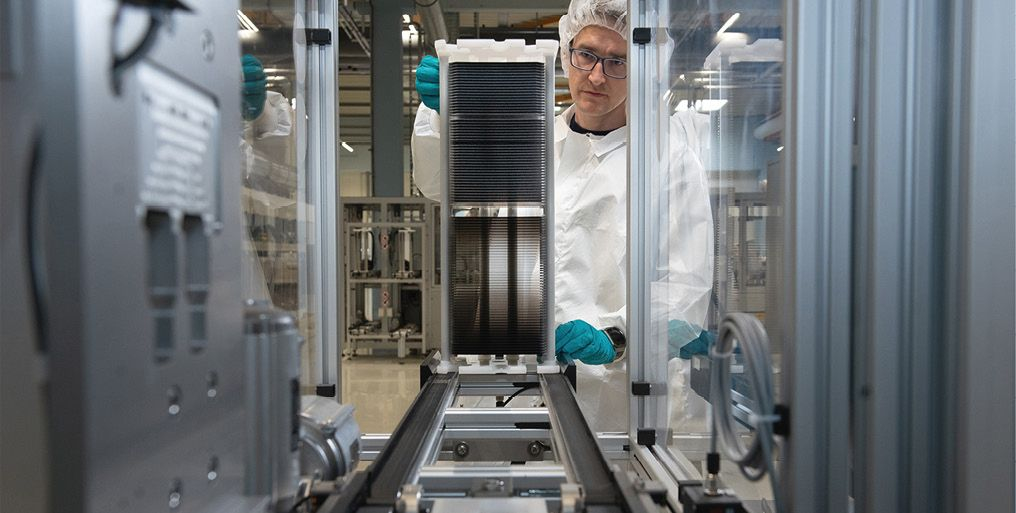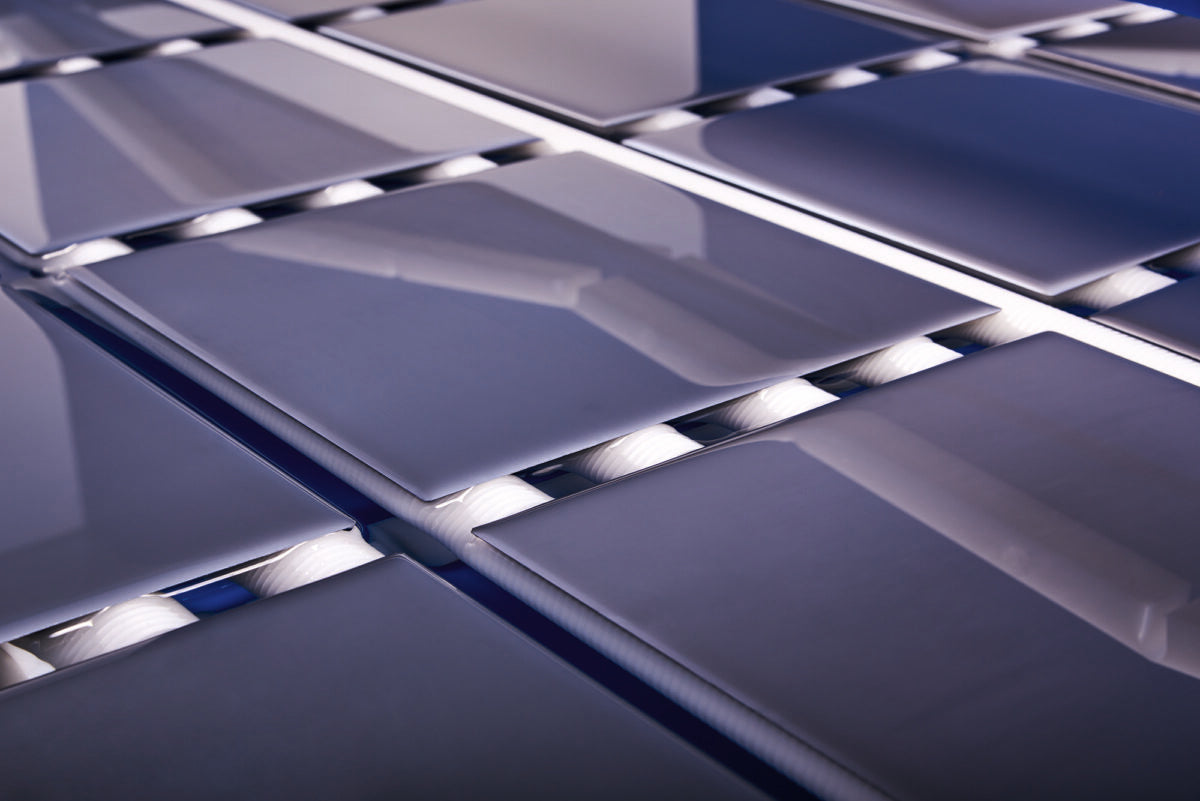https://www.pv-magazine-australia.com/2023/08/19/weekend-read-mapping-a-path-to-tandem-commercialisation/
Mapping a path to tandem commercialisation

HJT-perovskite tandem cells in production at Oxford PV’s facility in Brandenburg, Germany.
Image: Oxford PV
pv magazine: Oxford PV is developing two-terminal, perovskite-silicon tandem technology made with heterojunction (HJT) solar cells. What is the current cell size at your manufacturing facility near Berlin, Germany?
Chris Case: Since the target market is rooftop module manufacturers selling 400 W-plus modules, the size is M6 (166mm). Any bigger than that and the finished modules, which typically contain 60 M6 cells, become too heavy for single-person installation. Note that Fraunhofer ISE certified an M4 or 258.15 cm² cell because the cells we shipped for testing were made before upgrading the line to M6.
What does your roadmap look like today?
Since 2017, Oxford PV has consistently pushed the efficiency of its tandem cells by 1% a year. We have a clear roadmap to take the technology beyond 33% efficiency, at a rate of about 1% per year. We have figured out what it takes to scale from lab-scale or research-sized cells, typically 1 cm², to commercial-sized cells over 250 cm². We welcome the remarkable efficiency achievements to above 33% of KAUST [King Abdullah University of Science and Technology, in Saudi Arabia]. The research institutes, like Helmholtz [Zentrum Berlin] and KAUST, are showing what can be done, albeit with research-sized cells.
What advantages do you foresee for module makers who use your cells compared to conventional silicon PV?
Looking at the history of major step changes in the traditional silicon solar cell and module market, many manufacturers have chosen low-risk and low capital cost strategies. The move from back surface field solar cells to passivated structures, such as PERC [passivated emitter rear contact], required a limited number of new steps and process tools. Similarly, the move to even more advanced passivated devices, such as TOPCon [tunnel oxide passivated contact], are again taken with adapting existing factory process flows. This is where heterojunction is unique because it needs a greenfield, new factory.
The reward of HJT is a very high-efficiency and very high-voltage solar cell. The high voltage is critical for the two-terminal tandem cell because the tandem device is effectively two series-connected solar cells, one is silicon and the other is the wide-bandgap perovskite cell. The absolute performance of a high efficiency multi-junction solar cell counts on its voltage, which is what can deliver the extra energy. A TOPCon cell will always have a 20 or so millivolt (mV) deficit in open circuit voltage compared to HJT and we don’t want to give up those 20 mV, which contribute to performance. It is one of the reasons we selected HJT back in 2014 for our bottom cell and we remain committed to that decision.
You have a research and development site in Oxford, England, and an integrated production line in Germany. The company also recently registered a US subsidiary. Could you talk about your plans in the United States?
We established a subsidiary in the USA anticipating the potential to manufacture locally. It positions us well to apply for funding for US- based manufacturing. We have not made a decision as to the location of our next factory and options include expanding where we are in Germany, other locations in Europe and, of course, the US is a possibility.
How easy is it to find talented engineers, testers, and process specialists? Are you hiring?
I cannot recall a time in our 13-year history when we did not have solicitations for new hires and indeed we are hiring, both in the UK and in Germany. Having said that, there is competition for workers in many technology fields and as we exit the pandemic, the competition can be fierce. Our inclusive and diverse culture has rewarded us with extremely low turnover and it has never been necessary to have a reduction of the workforce. For the UK, Brexit has not been kind, requiring us to subsidize the right to work in the UK for talent that comes from the EU. Fortunately, keeping existing staff that are EU citizens but do not have UK citizenship was mostly a formality.
What are the next milestones for Oxford PV?
Although Oxford PV has begun initial production, there are additional milestones to be achieved before our direct customers, the module partners, can offer assembled modules to customers – and that is certification to the [International Electrotechnical Commission] IEC 61215 standard. This certification, along with its companion safety standard, is the assurance to end users that the module is fit for purpose and safe. In this case, the standards have not been fully adapted for this kind of multi-junction solar module so we must offer the early adopters a certification with a number of explanations. This will not affect the safety standard, for which the existing standard can be used without modification, amendment, or explanation.
Fast facts about Oxford PV
Founded in 2010; more than 550 patents; German production line has nameplate capacity of 100 MW; First commercial-sized perovskite-silicon tandem cell in 2017; 29.52% efficiency for champion lab-scale cell achieved in 2020; Reached 28.6% efficiency for commercial-sized cells in May 2023.
This content is protected by copyright and may not be reused. If you want to cooperate with us and would like to reuse some of our content, please contact: editors@pv-magazine.com.
<



